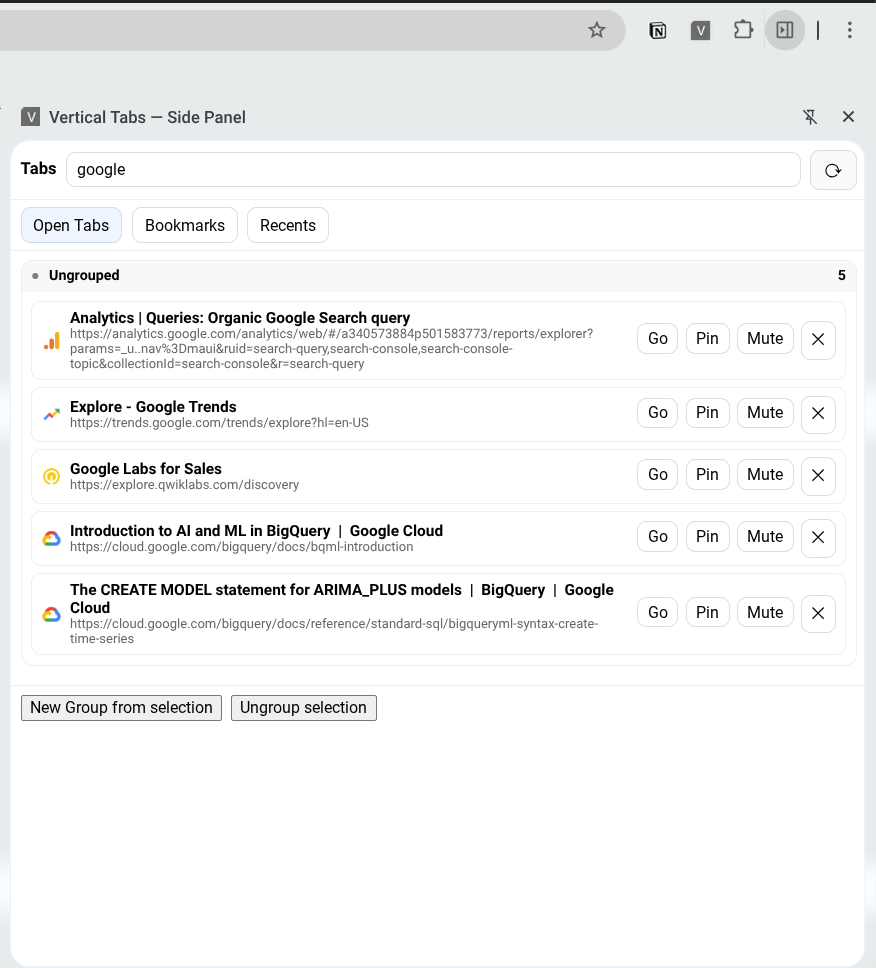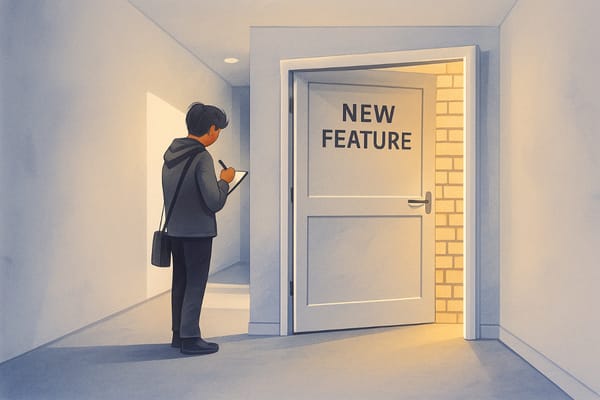If AI Builds Faster Than You Can Think, How Do Product Managers Stay Relevant?
AI has made building effortless — but not meaningful. As prototypes shrink from months to minutes, the real advantage isn’t speed; it’s awareness. This essay explores how Product Managers can adapt their craft, design faster feedback loops, and rediscover meaning in an AI-accelerated world.

An engineer who couldn’t design UX can now generate design systems faster than a designer can find their Figma password. A non-coder can now build an app before finishing their latte. As Figma’s CEO Dylan Field said, “Everyone is becoming more of a generalist... everyone’s becoming a product builder.” Artificial Intelligence has turned creation into reflex.
When everyone can build, the harder question becomes why something should be built at all. As John Oliver quipped, "AI slop is basically the newest iteration of spam", a flood of effortless creation without intent. That flood isn’t inherently bad; it’s just the inevitable consequence of frictionless making. But it raises the stakes for meaning.
In this new reality, quality becomes the differentiator, not speed. For Product Managers or anyone doing product thinking, the ability to isolate value from noise has become a survival skill. The new craft isn’t shipping faster; it’s choosing more wisely.
When creation is effortless, discernment becomes the hardest and most vital skill in modern product management.
But first, a slight detour.
The Fastest Mistake I’ve Ever Built
If you’ve ever used Chrome, you know this pain. Tabs multiplying like rabbits, your browser bar shrinking until every site becomes a tiny, indistinguishable favicon. It’s tabular misery, an endless horizontal roulette of half-open thoughts.

That’s what drove me to build a Chrome extension. I vibe coded a Vertical Tabs Chrome Extension with Search and Restore functionality. It took less than thirty minutes to get a working prototype, a small, satisfying rebellion against years of clutter. For a moment, it felt like victory.

But satisfaction is a tricky thing. I didn’t pause to ask whether the problem had already been solved—or if my fix even needed to exist. A quick look at the Chrome Web Store would have shown me dozens of extensions doing the exact same thing. And that is when the Thought Muncher in me woke up.
The problem wasn’t that I cared about the wrong thing—it’s that I moved too fast to notice what was already solved. I didn’t need to build; I needed to be aware. AI had removed the friction of execution, and with it, the natural pause that once forced reflection.
This is the paradox of the AI era: AI accelerates execution but not awareness.
That moment with Chrome tabs became my quiet metaphor for product work today. The faster we move, the less we see. We build, ship, and celebrate—but rarely stop to question whether we’re solving something that deserves to exist.
How Builders Lose Sight of Meaning
When we build too fast, meaning becomes the first casualty. Product Managers are trained to resist that impulse. They start not with features, but with friction—with curiosity about why a problem exists, who it affects, and how often it truly occurs. The discipline of product discovery forces them to pause, to ask questions that slow down motion long enough to find meaning.
A good PM’s process looks deceptively simple: observe, question, validate, prioritize. But behind that simplicity is a refusal to take assumptions at face value. They gather patterns from users, quantify them through data, and test them through small experiments. Every decision is designed to separate signal from noise.
That’s where many builders lose sight of meaning. The faster they move, the less time they spend understanding why something deserves to exist. The rush to build crowds out the space to think. The absence of reflection turns invention into replication.
And that’s precisely what happened in my Chrome experiment. My frustration was real, but I mistook irritation for insight. I didn’t test whether others shared the same pain, or whether a better solution already existed. I skipped discovery entirely and built too soon.
Awareness isn’t a delay—it’s a design choice. The best teams know that reflection filters noise, surfaces truth, and anchors innovation in purpose. Builders lose sight of meaning when they trade reflection for reaction, but they find it again when they slow down just enough to notice.
Desirability, Feasibility, Viability: The Framework AI Can’t Replace
In Testing Business Ideas, David Bland defines three key validation lenses:
- Desirability: Do customers truly want this?
- Feasibility: Can we build and deliver it effectively?
- Viability: Should we pursue it as a business?
AI accelerates feasibility, but desirability and viability remain deeply human.
Customers crave meaning, not motion.
Businesses reward outcomes, not prototypes.
AI amplifies efficiency. PMs preserve intentionality.
A Thought Experiment: The Customer Mirror
As building accelerates, reflection alone can’t sustain good product decisions. Product Managers need mechanisms that let learning move at the same pace as building. When AI compresses development cycles to hours, the real advantage lies in shortening the feedback loop without losing context or quality.
Andrew Ng captured this challenge well when he said, “If a prototype takes a day, waiting a week for user feedback is really painful.” That delay exists because our systems for validation are still designed for slow, human-paced feedback. The Customer Mirror is a concept born to solve exactly that problem—it aims to speed up feedback while keeping depth and meaning intact.

The Customer Mirror is an intelligent simulation trained on customer feedback, behavioral data, and persona insights. It allows teams to test assumptions both before and after building, closing the feedback gap that slows down innovation. It doesn’t replace real customers—it scales the learning process so insights evolve continuously as products do.
Here’s how it works:
- Pre-Build Validation: Before committing resources, teams can run early hypotheses through simulated customer personas. The mirror identifies friction points, tests desirability, and filters out weak ideas before they reach design or engineering.
- Post-Build Feedback: After launch, the mirror learns from live user data—comparing intent to behavior, surfacing blind spots, and highlighting mismatches between what users say and what they do.
Together, these two cycles form the continuous feedback engine of the future: fast enough for AI-paced building, but grounded enough to preserve human understanding. A well-designed Customer Mirror doesn’t just predict user behavior—it reveals where builders stop paying attention. It reminds teams that the hardest part of product management isn’t execution—it’s awareness.
The Limits of Reflection
The Customer Mirror offers speed and scale in learning, but like all mirrors, it comes with distortions. It reflects data, not depth; it can model behavior but not belief. Simulations can highlight friction and patterns, yet they lack the emotional texture of real users—the hesitation in a voice, the spark of surprise, the silence that says more than a metric ever could.
AI can accelerate understanding, but it can also create the illusion of it. A system trained on historical feedback risks amplifying bias, rewarding patterns of the past instead of revealing unmet needs. It’s useful for iteration, not imagination.
That’s where human judgment remains irreplaceable. Product thinkers still have to decide what the data means, when to ignore it, and how to translate it into action. The mirror can guide decisions, but it can’t make them. Empathy, storytelling, and ethical awareness are what keep reflection from turning into replication.
In the end, AI may help us see faster—but only humans can decide what’s worth seeing.
The Meaning Builder
A Product Manager is a Meaning Builder.
They turn data into narrative, prototypes into insight, and speed into strategy.
They remind teams that:
- What’s desirable isn’t always viable.
- What’s feasible isn’t always valuable.
- And what’s efficient isn’t always right.
AI compresses time-to-output. PMs protect time-to-understanding.
It doesn't matter if you are a Product Manager, Founder, Technoking, or Product CEO. What matters is that someone in the room is doing the work of Product Thinking: asking the right questions, designing the right feedback loops, and protecting the customer’s truth.
Titles change; Technologies change; responsibility doesn’t.
Conclusion: The Awareness Advantage
AI didn’t kill product management—it revealed why it matters.
When everyone can build, awareness becomes the real productivity hack.
The PM of the future won’t out-build the machine.
They’ll out-understand it.
Because building faster isn’t the goal. Building wisely is.




